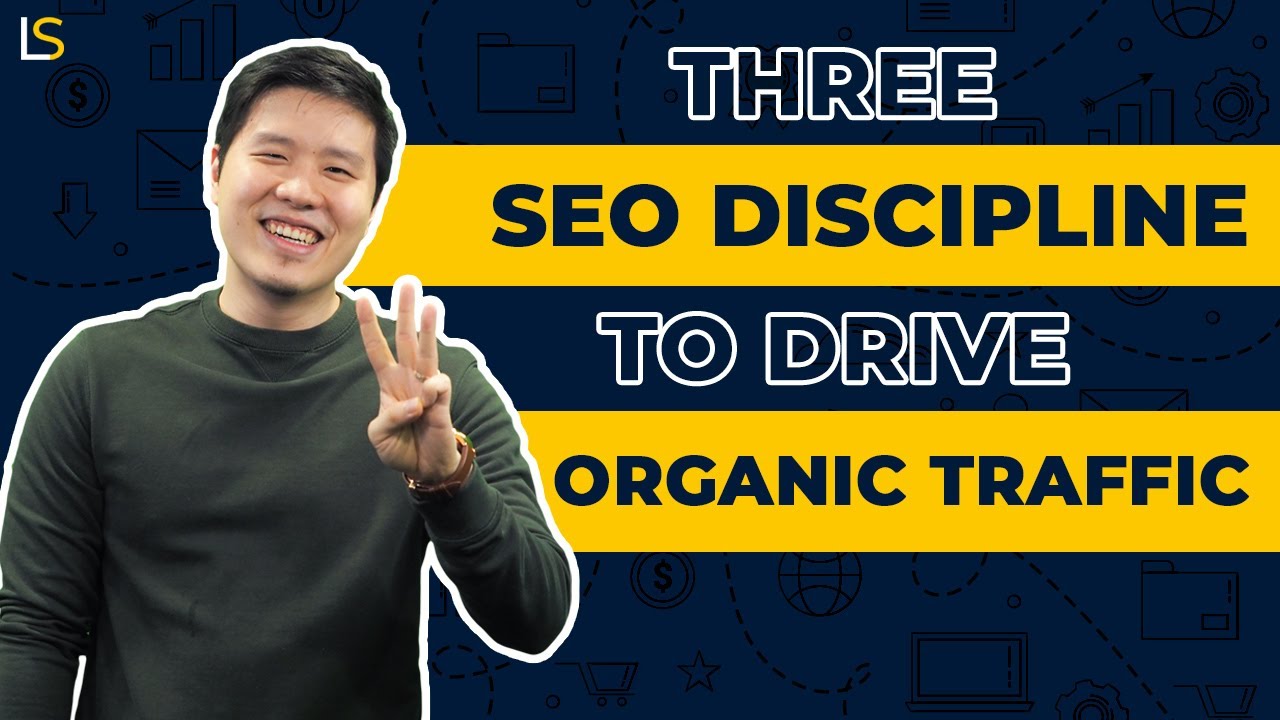Search engine optimization(SEO) is a fundamental aspect of digital marketing, with marketers often focusing on metrics like organic traffic and keyword rankings. While these metrics are essential, there are other often overlooked SEO conversion metricsthat can provide valuable insights into the effectiveness of your SEOefforts in driving conversions. By paying attention to these overlooked SEOconversion metrics, you can optimize your SEO strategy, improve the user experience, and ultimately achieve higher conversion rates. In this article, we will explore some of these overlooked SEO conversion metrics and shed light on why they deserve your attention.
What Are SEO Conversion Metrics?

SEO Metrics - Important SEO Metric to track | SEO Tutorial
SEO conversion metrics are quantitative measurements that help assess the success and effectiveness of search engineoptimization (SEO) efforts in generating desired actions or conversions on a website. These metrics go beyond traditional SEO metrics like organic traffic and keyword rankings to focus on the outcomes and actions taken by website visitors.
SEO conversion metrics provide insights into how well SEO strategies are driving conversions and impacting the overall performance of a website or online business. They help evaluate the return on investment (ROI) of SEO efforts by measuring the tangible results achieved through optimization.
Importance Of SEO Conversion Metrics
SEO conversion metrics are of utmost importance for several reasons:
- Measure the effectiveness of SEO efforts -SEO conversion metrics provide tangible data on how successful your SEO strategies are in driving desired actions and conversions on your website. They offer insights into the actual impact of your optimization efforts rather than just focusing on traffic or rankings.
- Identify areas for improvement -By tracking SEO conversion metrics, you can pinpoint specific areas of your website or optimization strategy that need improvement. Whether it's optimizing landing pages, refining keyword targeting, or enhancing the user experience, conversion metrics highlight where adjustments are needed to enhance conversion rates.
- Optimize user experience -SEO conversion metrics help you understand the behavior and preferences of your website visitors. By analyzing metrics like time to conversion or bounce rate, you can identify potential roadblocks, pain points, or areas of confusion in the user journey. This knowledge allows you to optimize the user experience and create a seamless path to conversion.
- Allocate resources effectively -SEO conversion metrics assist in allocating resources wisely. By understanding which pages, keywords, or campaigns are driving the most conversions and delivering the highest value, you can prioritize your efforts and investments accordingly. This ensures that your SEO resources are focused on activities that yield the best returns.
- Assess ROI and demonstrate value -SEO conversion metrics enable you to measure the return on investment (ROI) of your SEO efforts. By assigning a value to each conversion, you can compare the revenue or value generated from organic traffic against other marketing channels. This data helps you demonstrate the value of SEO and make informed decisions about resource allocation.
In summary, SEO conversion metrics provide valuable insights into the effectiveness of your SEO strategies in driving conversions, optimizing the user experience, and achieving your businessgoals. By focusing on these metrics, you can refine your optimization efforts, allocate resources effectively, and maximize the impact of your SEO initiatives.
Conversion Rate By Landing Page

The Anatomy Of A High Converting Landing Page | Conversion Rate Optimization Tips
Conversion Rate by Landing Page is a metric that measures the percentage of website visitors who complete a desired action or conversion on specific landing pages. It focuses on analyzing the performance and effectiveness of individual landing pages in driving conversions.
By tracking the conversion rate by landing page, you can gain valuable insights into which landing pages are successfully engaging and persuading visitors to take the desired actions, such as making a purchase, filling out a form, or subscribing to a newsletter. This metric allows you to identify the strengths and weaknesses of each landing page and make data-driven optimizations to improve their conversion rates. Here are a few reasons why Conversion Rate by Landing Page is an important metric in SEO:
- Identify high-performing landing pages -By analyzing the conversion rate of each landing page, you can identify which pages are effectively driving conversions. This knowledge allows you to replicate the successful elements across other landing pages and maximize the conversion potential of your website.
- Optimize underperforming landing pages -Conversion Rate by Landing Page helps you identify landing pages with lower conversion rates. By investigating these pages, you can identify potential issues, such as confusing messaging, weak call-to-action, or poor user experience, and make targeted optimizations to improve their conversion rates.
- Refine targeting and segmentation -Tracking the conversion rate by landing page allows you to understand the performance of different landing pages based on targeted keywords, audience segments, or marketing campaigns. This information helps you refine your targeting strategies and tailor landing pages to specific audience needs, resulting in higher conversion rates.
- Improve user experience -Conversion Rate by Landing Page provides insights into the user experience on different landing pages. By analyzing user behavior, engagement metrics, and conversion rates, you can optimize the design, layout, content, and overall user experience of your landing pages to enhance conversions.
Overall, Conversion Rate by Landing Page is a valuable metric that helps you understand the performance of individual landing pages and make informed decisions to optimize your SEO strategy. By improving conversion rates on specific landing pages, you can drive higher overall conversion rates, increase user engagement, and achieve better results for your business.
Time To Conversion
Time to Conversion is a metric that measures the duration it takes for a website visitor to complete a desired action or conversion from their initial interaction with the website. It tracks the time elapsed between a visitor's first engagement with the website, such as landing on a page and the moment they convert by making a purchase, filling out a form, or performing another predefined action. Understanding the Time to Conversion is important in SEO for several reasons:
- Identifying conversion barriers -By tracking the time it takes for visitors to convert, you can identify potential roadblocks or barriers in the conversion process. If there is a significant time gap between initial interaction and conversion, it may indicate issues such as complicated forms, unclear instructions, or a lack of persuasive content. Identifying and addressing these barriers can help streamline the conversion process and improve overall conversion rates.
- Optimizing user experience -Analyzing Time to Conversion provides insights into the user experience on your website. If visitors are taking longer than expected to convert, it could indicate a poor user experience, confusing navigation, slow page load times, or other usability issues. By optimizing the user experience and addressing any usability concerns, you can reduce the time it takes for visitors to convert and improve overall satisfaction.
- Refining targeting and content strategies -Time to Conversion can vary based on different segments or traffic sources. By analyzing this metric, you can identify which segments or channels have shorter or longer conversion times. This information helps refine your targeting strategies and tailor your content to better align with the needs and preferences of specific audience segments, ultimately reducing the time it takes for them to convert.
- Improving conversion funnel efficiency -Time to Conversion helps you understand where visitors may be dropping off in the conversion funnel. By analyzing the time gaps at different stages of the conversion process, you can identify areas that need improvement, such as optimizing landing pages, simplifying forms, or providing clearer calls to action. Streamlining the conversion funnel can lead to faster conversions and improved overall conversion rates.
By monitoring and analyzing Time to Conversion, you can gain insights into the efficiency of your conversion process, identify areas for improvement, and take actionable steps to optimize the user experience and drive higher conversion rates.
Mobile Conversion Rate

True Cause of Low Mobile Conversion Rates and What You Can Do About It
Mobile Conversion Rate is a metric that measures the percentage of website visitors using mobile devices who complete a desired action or conversion on your website. It specifically focuses on the conversion rate of mobile traffic and provides insights into the effectiveness of your mobile optimization efforts.
With the increasing prevalence of mobile devices for browsing the internet, optimizing your website for mobile users is crucial. Mobile Conversion Rate is important in SEO for several reasons:
- Mobile user experience optimization -Mobile Conversion Rate helps assess the effectiveness of your mobile user experience. If the mobile conversion rate is low, it may indicate that your website is not optimized for mobile devices, resulting in a subpar user experience. By analyzing this metric, you can identify areas of improvement and optimize your website to provide a seamless and engaging experience for mobile visitors.
- Responsive design and mobile usability -Mobile Conversion Rate reflects how well your website adapts to different screen sizes and devices. It considers factors such as responsive design, intuitive navigation, fast load times, and easy-to-use forms on mobile devices. By optimizing these aspects, you can enhance mobile usability, encourage conversions, and improve overall mobile performance.
- Identifying mobile-specific barriers -Mobile Conversion Rate helps uncover any specific barriers or challenges that mobile users may encounter during the conversion process. It could be related to issues such as form fields that are difficult to complete on mobile screens, payment gateways that are not mobile-friendly, or slow page load times on mobile devices. Addressing these barriers can lead to improved mobile conversion rates.
- Capturing mobile traffic potential -Mobile devices account for a significant portion of overall internet traffic. By monitoring Mobile Conversion Rate, you can ensure that you are capitalizing on the potential of mobile traffic. It helps you understand the effectiveness of your mobile SEO strategies and the impact of mobile optimizations on your overall conversion goals.
By focusing on Mobile Conversion Rate, you can identify areas where your website may not be effectively converting mobile visitors and implement necessary improvements. Optimizing the mobile user experience and ensuring seamless conversions on mobile devices can lead to higher conversion rates and improved business outcomes.
Organic Conversion Value

SEO Tips to Improve Organic Traffic (AMA #26)
Organic Conversion Value refers to the monetary value generated from conversions attributed specifically to organic search traffic. It assigns a financial value to the desired actions or conversions completed by users who found your website through organic search engine results.
Calculating the Organic Conversion Value involves assigning a value to each conversion or desired action based on its impact on your business. For example, if a conversion represents a purchase, you can assign the actual revenue generated from that sale as the value. If a conversion represents a lead, you can assign a value based on the potential revenue or lifetime customer value associated with that lead. Understanding the Organic Conversion Value is important in SEO for several reasons:
- ROI measurement -By assigning a monetary value to organic conversions, you can accurately measure the return on investment (ROI) of your SEO efforts. It allows you to compare the revenue generated from organic search traffic against the costs and resources invested in your SEO campaigns, helping you assess the profitability and effectiveness of your SEO strategy.
- Resource allocation -Organic Conversion Value helps you allocate resources more effectively. By understanding the value generated from organic conversions, you can prioritize your SEO efforts and allocate resources to areas that have the highest impact on driving conversions and generating revenue. It allows you to focus on optimizing keywords, content, and strategies that result in higher organic conversion values.
- Comparative analysis -Organic Conversion Value enables you to compare the value generated from organic search traffic with other marketing channels. It helps you understand the relative contribution of SEO in generating conversions and revenue compared to other advertising or marketing initiatives. This information assists in making informed decisions about budget allocation and optimizing your overall marketing mix.
- Business impact -Organic Conversion Value provides insights into the direct impact of organic search traffic on your business. It helps you understand the financial value of SEO in terms of driving meaningful actions and revenue-generating conversions. This information is valuable for demonstrating the value of SEO to stakeholders and making data-driven decisions to improve business outcomes.
By tracking Organic Conversion Value, you can evaluate the financial impact of your SEO efforts, allocate resources strategically, and optimize your SEO strategies to generate higher-value conversions from organic search traffic.
Keyword Conversion Rate

How to Find the Overall Conversion Rate for Your Amazon Keywords and Niche
Keyword Conversion Rate is a metric that measures the percentage of website visitors who arrive through specific keywords or search queriesand go on to complete a desired action or conversion. It provides insights into the effectiveness of different keywords in driving conversions and helps optimize SEO strategies accordingly. Keyword Conversion Rate is important in SEO for several reasons:
- Keyword targeting optimization -By tracking the conversion rate for different keywords, you can assess their effectiveness in driving conversions. It helps you identify high-converting keywords that are driving valuable traffic and prioritize them in your SEO efforts. You can optimize your content, meta tags, and landing pages to better align with these keywords and increase conversion rates.
- Understanding user intent-Keyword Conversion Rate helps you understand the user intent behind specific search queries. By analyzing which keywords result in higher conversion rates, you can gain insights into the needs and motivations of your target audience. This information allows you to tailor your content and messaging to better address user intent, enhancing the relevance and persuasiveness of your website.
- Refining content and optimization strategies -By identifying keywords with low conversion rates, you can identify areas for improvement. It may indicate that the content or landing pages associated with those keywords need optimization or adjustments. By refining your content, improving the user experience, or addressing potential barriers, you can increase the conversion rates for underperforming keywords.
- Aligning SEO and conversion goals -Keyword Conversion Rate helps align SEO efforts with business objectives. By focusing on keywords that generate conversions and drive revenue, you can ensure that your SEO strategy aligns with your overall conversion and revenue goals. It helps prioritize your keyword targeting and optimization efforts to maximize the impact on business outcomes.
By analyzing and optimizing Keyword Conversion Rates, you can refine your keyword targeting, improve content relevance, and enhance user experience to increase conversion rates. This metric helps you understand the effectiveness of different keywords in driving conversions and guides your SEO strategies to attract valuable, high-converting traffic to your website.
How To Know Which SEO Metrics To Track?

Track SEO Metrics and Rank Faster on Google [Complete Guide]
Determining which SEO metrics to trackdepends on your specific goals, business objectives, and the nature of your website. Here are some steps to help you identify the SEO metrics that are most relevant and valuable for your needs:
- Define your goals -Clearly outline your business goals and objectives. Determine what you want to achieve with your website and how SEO can support those goals. Examples could include increasing online sales, generating leads, improving brand visibility, or driving website engagement.
- Align metrics with goals -Once you have defined your goals, identify the key performance indicators (KPIs) that align with those goals. Consider the metrics that directly reflect progress toward achieving your objectives. For example, if your goal is to increase online sales, metrics like conversion rate, revenue from organic traffic, and average order value may be important to track.
- Consider your target audience -Understand your target audience and their behavior. Consider the metrics that provide insights into user engagement, such as bounce rate, time on page, or pages per session. These metrics can help you gauge the effectiveness of your content, user experience, and overall website performance.
- Assess your website's specific needs -Evaluate the unique characteristics of your website and industry. Identify the metrics that are most relevant to your industry, such as e-commerce metrics (e.g., cart abandonment rate, product page views), lead generation metrics (e.g., form submissions, lead quality), or content engagement metrics (e.g., social shares, comments).
- Consider the full SEO funnel - Take a holistic approach to SEO metrics by considering the entire conversion funnel. Track metrics at each stage of the customer journey, from initial awareness (e.g., organic traffic, keyword rankings) to consideration (e.g., time on page, pages per session) and conversion (e.g., conversion rate, revenue from organic traffic).
- Use industry best practices -Research industry benchmarks and best practices to understand which metrics are commonly tracked and deemed important in your specific industry or niche. This can provide valuable guidance in selecting relevant metrics to track.
- Continuously assess and adjust -Regularly review and assess the performance of your chosen metrics. Evaluate their relevance, usefulness, and alignment with your goals. Adjust and refine your metrics as needed to ensure they provide meaningful insights and drive improvements in your SEO efforts.
How To Measure These SEO Metrics?
Conversion Rate By Landing Page Metric
- Set up Conversion Goals- Define specific actions or conversions that indicate success on your website, such as form submissions, purchases, or sign-ups.
- Use Google Analytics- Implement goal tracking in Google Analytics to measure conversions and track them by landing page. Access the "Conversions" or "Goals" section to view the conversion rate for each landing page.
Time To Conversion Metric
- Track User Journey- Utilize event tracking or custom dimensions in Google Analytics to capture the timestamp of the first interaction with your website and the conversion event.
- Calculate Time to Conversion- Subtract the timestamp of the first interaction from the timestamp of the conversion event to determine the time it took for visitors to convert. Analyze this data to identify patterns or potential areas for improvement.
Mobile Conversion Rate Metric
- Segment Mobile Traffic - Use Google Analytics to segment your traffic by device category. Access the "Audience" section, select "Mobile," and review the conversion rate specifically for mobile devices.
- Analyze Mobile Performance - Compare the mobile conversion rate to the overall conversion rate and identify any discrepancies. Optimize your mobile experience, such as improving page load speed and mobile usability, to enhance the mobile conversion rate.
Organic Conversion Value Metric
- Assign Value to Conversions - Determine the value of each conversion based on its impact on your business, such as revenue generated or estimated customer lifetime value.
- Track Revenue from Organic Traffic- Utilize revenue tracking in your analytics tool or e-commerce platform to attribute revenue to organic traffic. Calculate the total revenue generated from organic conversions.
Keyword Conversion Rate Metric
- Track Conversion by Keyword- Set up keyword conversion tracking in your analytics tool by associating conversions with specific keywords or search terms. Use custom dimensions or parameters to capture this data.
- Calculate Keyword Conversion Rate- Divide the number of conversions generated by each keyword by the total number of visits or impressions for that keyword. Multiply by 100 to get the conversion rate. Analyze this data to identify high-converting keywords and optimize your SEO strategies accordingly.
Implementing the necessary tracking codes, configuring goals and conversions, and regularly reviewing the data in your analytics tool is essential for the accurate measurement of these SEO metrics. Continuous monitoring and analysis will provide valuable insights to guide your optimization efforts and improve overall website performance.
People Also Ask
Why Are Conversion Rate By Landing Page Metrics Important In SEO?
Conversion rate by landing page metrics are important in SEO because they provide insights into the performance of individual landing pages, helping identify which pages are effective at driving conversions and which ones need optimization.
How Can Tracking Time To Conversion Improve SEO Efforts?
Tracking time to conversion can improve SEO efforts by identifying potential roadblocks or areas where visitors might be dropping off in the conversion process. This data allows for improvements in user experience, content optimization, and reducing the time it takes for visitors to convert.
What Is The Significance Of Mobile Conversion Rate In SEO?
Mobile conversion rate is significant in SEO as mobile optimization directly impacts user experience and conversion rates. Monitoring mobile conversion rate helps identify any discrepancies or issues between desktop and mobile experiences and enables improvements in mobile usability.
How Does Assigning An Organic Conversion Value Impact SEO Strategies?
Assigning an organic conversion value allows for an accurate assessment of the return on investment (ROI) of SEO campaigns. It helps compare the value generated from organic traffic with other marketing channels, enabling better resource allocation and decision-making in SEO strategies.
Why Is Tracking Keyword Conversion Rate Important In SEO?
Tracking keyword conversion rate is important in SEO as it provides insights into the effectiveness of specific keywords in driving conversions. This information helps optimize SEO strategies by identifying high-converting keywords and refining content to align better with user intent.
Conclusion
While organic traffic and keyword rankings are commonly tracked SEO metrics, they only tell part of the story. By diving deeper into overlooked SEO conversion metrics, such as conversion rate by landing page, time to conversion, mobile conversion rate, organic conversion value, and keyword conversion rate, you can gain a more comprehensive understanding of your SEO performance and make data-driven improvements.
These metrics provide insights into specific aspects of your SEO strategy, allowing you to identify strengths and weaknesses, optimize user experience, refine targeting strategies, and allocate resources more effectively. By focusing not only on driving traffic but also on generating meaningful conversions, you can maximize the impact of your SEO efforts and achieve better results for your business. Remember, success in SEO is not just about ranking high in search results, but about driving conversions that contribute to your overall business goals.
